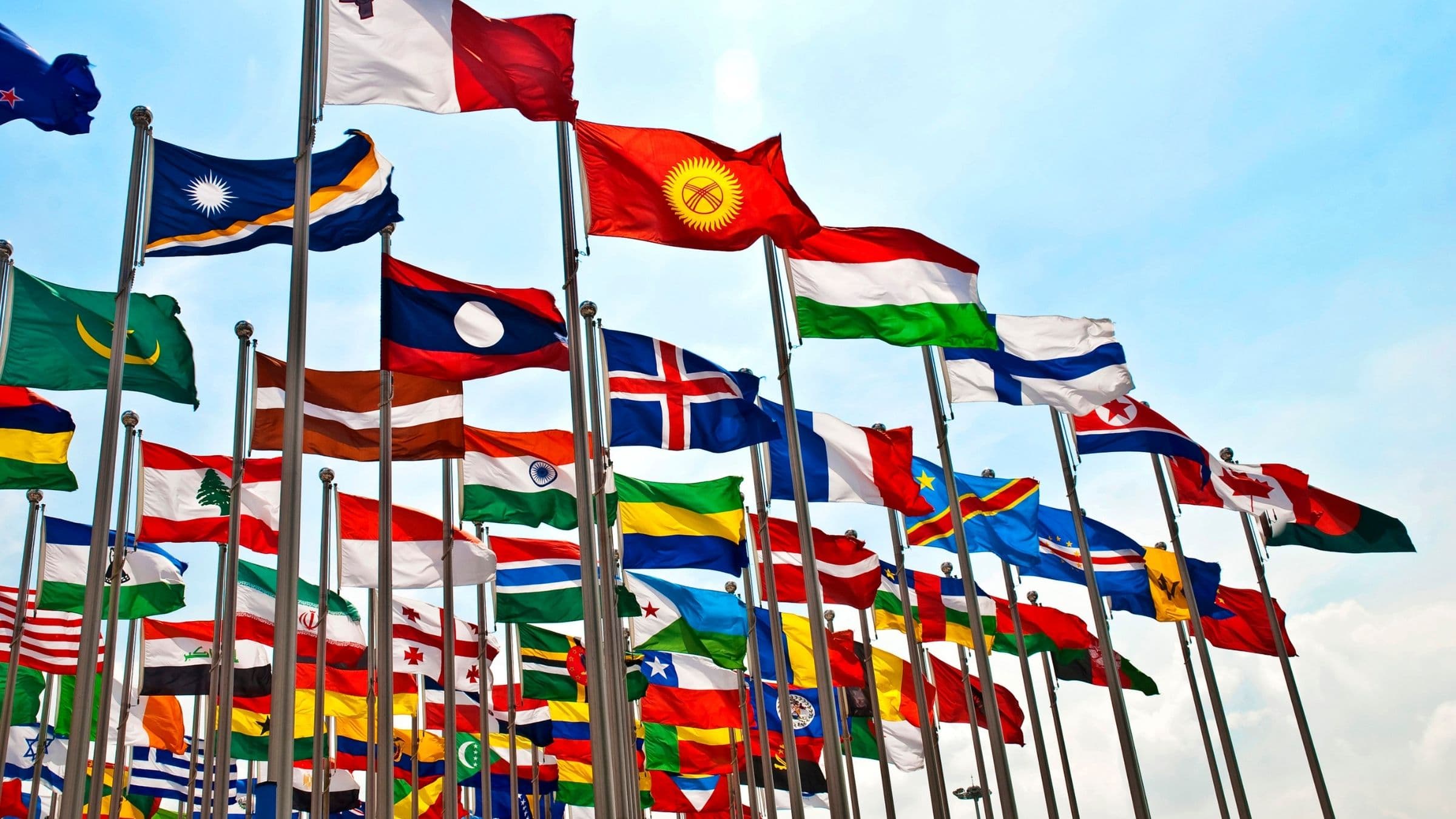
COUNTRY PROFILE
Discover more about the Polish market including overviews about the retail, foodservice, and food-processing sectors. Events, resources, and more are linked throughout the profile.

$168.6 Million
total of U.S. processed foods imports in 2023

5.2% Increase
GDP growth in 2022
Euromonitor reports that economic growth in Poland slowed down in real terms in 2022 compared to the previous year, although remained stronger than anticipated. Over the year, economic expansion was supported by elevated private consumption, solid external demand and increasing foreign investments. However, in 2023 elevated inflationary pressures and tightening financial conditions have undermined business and consumer confidence, raised uncertainty, and weighed on the country’s economic outlook over the near term.
In 2022, the global economic outlook deteriorated significantly due to various factors, including Russia’s invasion in Ukraine, energy and food supply issues, and the lingering impact of the COVID-19 pandemic. Despite the challenging environment, Poland’s real GDP growth remained robust, slowing only slightly from 6.8% in 2021 to 5.2% in 2022. In fact, Poland’s economy outperformed the Eastern Europe average during the same year. A robust labor market, solid wage growth and resilient private spending remained key factors of growth in 2022. However, over 2023, Poland’s economic development is expected to sharply slow down, with real GDP growing by only 0.07%. The near-term outlook in the country is clouded by persisting inflationary pressures, slowing domestic and foreign demand, a sharp tightening of financial conditions and mounting geopolitical tensions.
USDA’s Office of Agricultural Affairs (OAA) in Warsaw, hereinafter referred to as FAS Post Warsaw, reports that Poland is Central and Eastern Europe’s largest market for food and beverage products. With a population of nearly 38 million people, Poland is a large and growing market for U.S. food and agricultural products. In 2022, Poland’s economy was slowly returning to pre-pandemic levels. When Russia invaded Ukraine in February 2022, it sent shock waves through the Polish economy. The subsequent imposition of sanctions by the European Union (EU) and Poland on Russia and Belarus and the disruption in trade, have contributed to sharp increases in energy, fuel, and food prices; these factors also affected Poland’s economy throughout 2023. Poland’s total 2022 imports of food, agricultural, and related products were valued at over US$39 billion, with U.S. imports accounting for US$585 million.
The current strife in neighboring Ukraine has brought challenges to the Polish market. The war has disrupted the transportation of goods into Poland, affecting not only domestic consumption, but also certain processing industries. This has created a potential gap between consumer demand and supply in several sectors, such as processed fruit, pollock, and salmon.
One of the most affected industries is Poland’s fish processing industry, one of the largest in the world. The imposition of sanctions by the EU and Poland on Russia and Belarus and the disruption of trade have contributed to a sharp rise in inflation, driven by energy/fuel and food prices climbing 14.4% in 2022. More than two million Ukrainian refugees have arrived in Poland since the start of the conflict, increasing demand for goods. Poland is searching for new suppliers and supply chains to mitigate the externalities brought on by the conflict in Ukraine.
Polish consumers tend to view the U.S. positively and consider U.S.-origin products to be high quality. Many Polish consumers tend to prefer Polish products over imports, and chains commonly advertise that they offer Polish products to increase sales. U.S. products are often shipped to third country EU ports of entry and are re-exported to Poland without additional tariffs or regulatory requirements, besides language labeling.
Poland is the eighth largest market in Europe for the export of U.S. processed foods. U.S. exports of processed foods to Poland totaled US$144.1 million in 2022, which was up 20% from that of 2021. In 2023, processed food exports grew another 17% to US$168.6 million.
Top 2023 U.S. processed food exports to Poland included:

$34.5 Billion
estimated total of retail sales of packaged food products in 2023

58.4%
increase in retail sales since 2019

$50.3 Billion
estimated in sales of packaged food products by 2028
According to Euromonitor, retail sales in the packaged food market in Poland reached US$34.5 billion in 2023. That represents a growth rate of 58.4% or US$12.7 billion since 2019. By the year 2028 the retail sales in the packaged food market in Poland is expected to reach US$50.3 billion, a growth rate of 32.6% and US$12.3 billion.
High growth products in the forecast include:
FAS Post Warsaw reports that the distribution system for consumer-ready food products has evolved rapidly and is one of the most dynamic areas of the Polish economy. The retail sector is diverse and ranges from small family operated stores to medium-sized stores to large distribution centers comparable with those found in the U.S. Most hypermarkets and large discount stores are foreign owned, while small-scale stores are predominantly Polish.
Poland’s wholesale market structure has three categories: national chains, regional wholesalers, and buyer groups. National chains are the least numerous and operate branches throughout Poland with central management. Regional wholesalers have grown, consolidated, and cover specific areas, usually several provinces. Regional wholesalers have a strong presence in local markets and offer a wide range of products, and at times, a better service than companies operating on a nationwide scale. Buyer groups operate in several market segments and are increasingly integrated with specific retailers.
In Poland, the cash-and-carry format has gained popularity quickly, as small, traditional retailers – of which there are many – rely on them as distributors. Most leading cash-and-carry chains target small, traditional retailers and hotel, restaurant, and institution (HRI) outlets. While market consolidation is likely to increase, new market entrants can also be expected in the long term. The main stakeholders in the cash-and-carry segment are Makro Cash and Carry Polska SA, Selgros Cash and Carry Sp. z o.o., and Eurocash SA.
Large retail chains control as much as 70% of the Polish market. The largest retail chains in Poland include Biedronka, Lidl Polska, Netto Polska, Eurocash (owner of Delikatesy Centrum, Lewiatan, Euro Sklep, ABC, Gama, and Groszek), Auchan Polska, Kaufland Polska, and Carrefour Polska. Market analysis shows that almost 30% of confectionary retail sales occur through convenience chains such as Zabka and small grocery retailers.
High competition from discounters in addition to the changing model of grocery shopping in Poland favors local, smaller stores, which could be more challenging for supermarkets in the future. Supermarket operators are therefore expected to compete with affordable offers, attracting distributors or local brands that are unique but can address the latest trends.
Euromonitor reports that a substantially improved performance by Polish supermarkets in current value growth terms in 2022 was largely attributable to price increases as inflation in Poland rose dramatically due to the combined impact of the global recovery from the pandemic and Russia’s invasion of Ukraine. However, like discounters, the channel also benefited as the resultant spike in living costs led many consumers to curb spending on visits to foodservice outlets and cook for themselves at home more often.
Supermarket operators were particularly well placed to capitalize on this behavior due to their offer of a wide selection of reasonably priced fresh foods such as bread, meat, fish, fruit, and vegetables. Moreover, as with discounters and convenience stores, the channel’s performance was bolstered by the growing tendency of Poles to make smaller but more frequent grocery purchases from retailers nearer to their homes instead of travelling to shopping centers or hypermarkets in out-of-town locations.
Dino remained the clear leader in supermarkets in terms of value sales and outlet numbers in 2022 and was also the most dynamic player in both respects. The rapid expansion of this chain has been a key driving force behind the positive development of the entire channel in recent years. It has mainly focused on opening mid-sized outlets close to densely populated residential areas, especially in smaller towns. Dino has also given particular attention to increasing its presence in central and northern regions of Poland, though the west of the country, where it originated, remains its stronghold. Another supermarkets chain that has recently pursued an aggressive expansion strategy, through both organic growth and mergers and acquisitions, is Stokrotka, which placed third in terms of outlet numbers in 2022.
The number of convenience stores in Poland continued to increase at a healthy pace in 2022. As was the case throughout the 2018-2023 review periods, growth in outlet numbers was largely driven by previously independent small local grocers joining chained networks. This option is increasingly attractive to these retailers as trading conditions become more challenging due to the growing tendency of consumers to try to save money and time by frequently visiting convenience stores to buy food and other essentials on an as-needed basis instead of making weekly or fortnightly trips to hypermarkets and supermarkets.
Thanks to the stronger bargaining power of chains, independents that take this route can become much more competitive in terms of pricing and product assortments, while also accessing marketing resources, digital tools and customer relationship management systems that help to increase footfall. Additionally, the greater flexibility of chained convenience stores gives them a key advantage over larger grocery retailers, in that they can more quickly adjust their offers in response to emerging trends or the specific preferences of consumers in the locality.
With car usage and levels of movement among the Polish population increasing due to the easing of the pandemic and the ending of most official mitigation measures, forecourt retailers showed a markedly improved performance in current value growth terms in 2022. The channel also benefited as the steep rise in the cost of living prompted many Poles to choose staycations over foreign holidays. Current value sales were further bolstered by the massive influx of Ukrainian refugees. The Polish Oil Industry and Trade Organization (POPiHN) estimates that around one million vehicles from Ukraine crossed the border into Poland over the course of the year.
FAS Post Warsaw reports that U.S. consumer food products with good potential in the Polish retail food market include fish and seafood, alcoholic beverages, food preparations and ingredients, tree nuts, dried fruit, dog and cat food and sauces, dressings, and condiments.
FAS Post Warsaw reports that according to a survey conducted by leading Polish cash-and-carry operators in 2022, 35% of Poles do not regularly dine out. This is changing in urban areas where employees work longer hours and dining out is a more common social activity. Despite Poles’ preference for homemade meals, they are gradually moving towards ready-made meals, particularly among young urban professionals. Busy personal lives coupled with professional lives provide less free time.
International cuisines are also gaining in popularity due to increased demand by well-traveled Poles. Italian, Chinese, Mexican, and Indian restaurants can be found in almost every city. American casual dining and quick-service chains are common in larger cities. International hotel chains such as Marriott, Radisson, Intercontinental, Sheraton, and Hilton are also present in Polish cities.
Euromonitor reports that with more people in Poland are now consciously reducing their intake of meat or forgoing it entirely for the sake of their health, the environment and animal welfare, the growing availability of vegetarian and vegan options remained one of the most visible trends in terms of foodservice menu innovation in 2023. Full-service restaurants and self-service cafeteria operators were most proactive in responding to this shift, though players in other categories also updated and diversified their offers to keep pace with changing consumer preferences.
For instance, limited-service restaurants giant McDonald’s introduced the McMuffin Avocado, a vegetarian breakfast meal made with eggs, guacamole, arugula, and tomatoes. The increasing demand for healthier alternatives also inspired chains and independents in all categories to develop new menu items that are lower in salt, fat and sugar, made with all-natural or organic ingredients etc. Similarly, as rising health awareness led many Poles to moderate their consumption of alcohol, more bars/pubs and full-service restaurants began serving non-alcoholic cocktails.
Consumer foodservice in Poland looks set to perform reasonably well over the forecast period, with solid growth in total current value sales and transactions projected. Trade should pick up from 2024 as confidence and purchasing power among the population start to recover in line with the further easing of inflationary pressures and anticipated increases in wages and social transfers. Increasingly busy lifestyles and rising tourism flows will also continue to support the positive development of the market, as will menu diversification and improvements in quality standards. The optimistic outlook should draw in more independent entrepreneurs and encourage many chains to expand, hence total outlet numbers are expected to grow steadily.
Rising health-consciousness among Poles will continue to shape competitive strategies in all categories, most notably by incentivizing players to broaden their offers of vegetarian and vegan options. Similarly, the growing willingness of consumers to experiment with novel and exotic flavors will result in various types of ethnic cuisine becoming more widely available. Home delivery/takeaway services and digital tools for managing orders and payments are also likely to be focal points for innovation as convenience gains importance as a selling point. Additionally, with consumer choices increasingly influenced by environmental concerns, independents and chains across the market are expected to step up efforts to enhance their sustainability credentials.
FAS Post Warsaw reports that U.S. consumer food products with good potential in the Polish food market include food preparations, tree nuts, alcoholic beverages, dried fruit, sauces and condiments, fish, and seafood.
FAS Post Warsaw reports that Poland’s food processing industry is one of the largest in the EU. In 2022, the food processing industry accounted for over 9% of Poland’s US$688 billion GDP. The most important sectors are meat, dairy, beverages, confectionary baking, and processed fruit and vegetables.
The Polish food processing sector includes both domestic and international companies. Many small companies also operate meat and bakery processing plants throughout Poland. The largest food processing sectors are meat, dairy, and alcoholic beverages, followed by confectionery, food concentrates, sugar, fruits and vegetables, juices, and non-alcoholic beverages.
An example of Polish market modernization is the confectionary sector. According to industry reports, about 42% of Poles consume at least one chocolate bar per day, and about 35% have one or more wafer bars. More Poles, particularly among the expanding middle classes, seek higher-end products. Poland attracts foreign companies and foreign investors because of its macroeconomic climate, developed financial sector, and its well-educated, productive, and wage-competitive labor force.
Foreign investors have played a significant role in developing and modernizing the Polish food processing industry. Multinationals now account for over 70% of confectionery production and own the largest breweries, meat processing plants, bottling plants, and horticultural processing plants. Coca-Cola, PepsiCo, Nestle, Mondelez, Smithfield, Danone, and Mars have significant production plants in Poland and American companies are among the largest foreign investors in the food processing sector. These stakeholders produce a broad range of high-quality consumer-ready products, which often compete directly with locally available U.S. consumer-ready exports.
Domestic and EU products, which account for over 50% of total food imports, are the main competitors for U.S. exports. The growth of Poland’s food processing industry has led to a wider variety of locally made products, including Polish-produced iconic American products. Polish fish and seafood imports continued to grow in 2022 and reached over US$3 billion, with a US$129 million (4% market share) originating from the U.S. Poland is now one of the world’s largest salmon processors.
Polish processors are increasingly interested in sourcing fish and seafood products, bakery ingredients, tree nuts, dried fruit, (prunes, raisins), highly processed and functional ingredients flavoring agents and aromas, sweeteners, food additives, food coloring agents and peptones, derivatives, and enzymes.